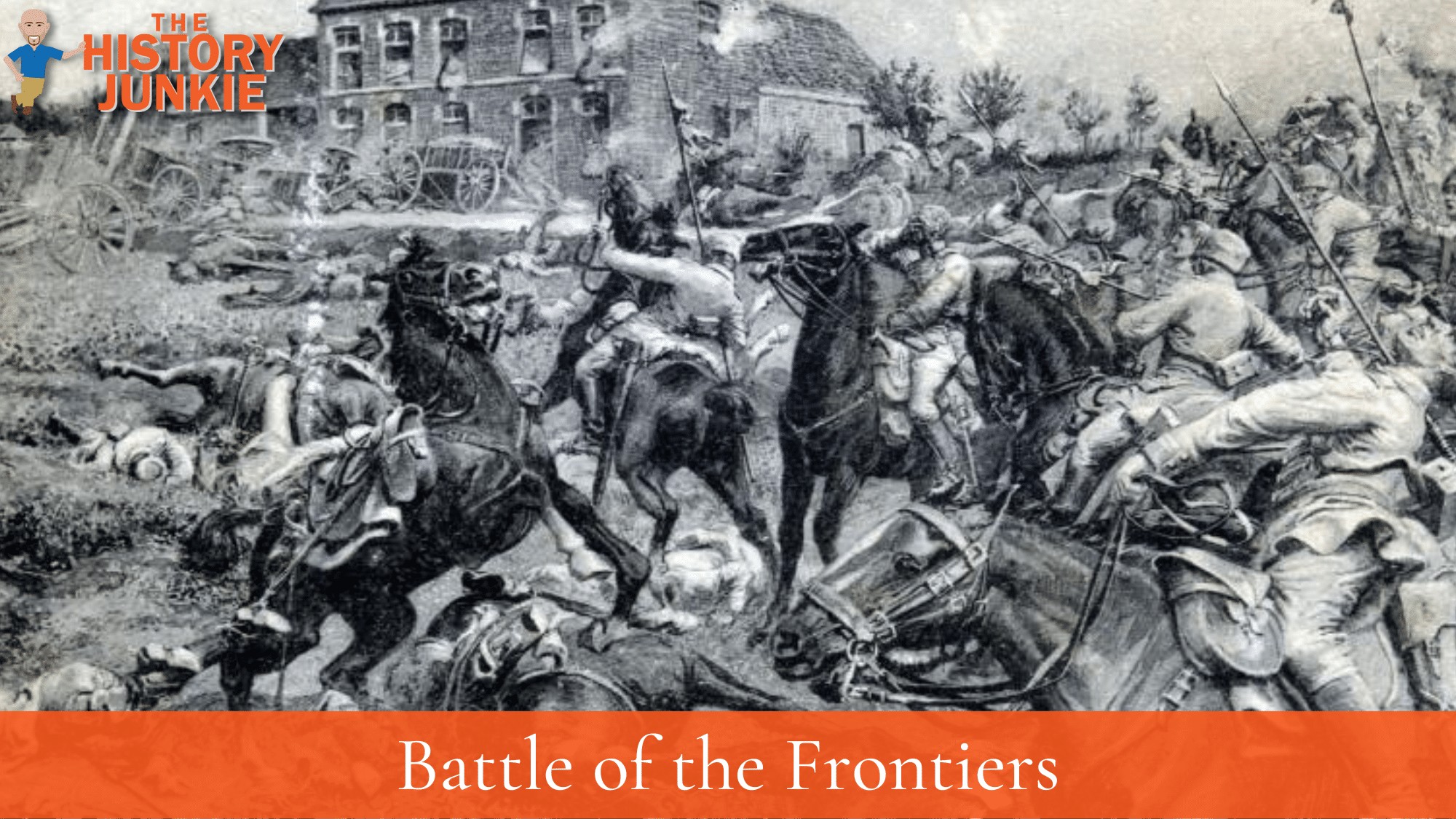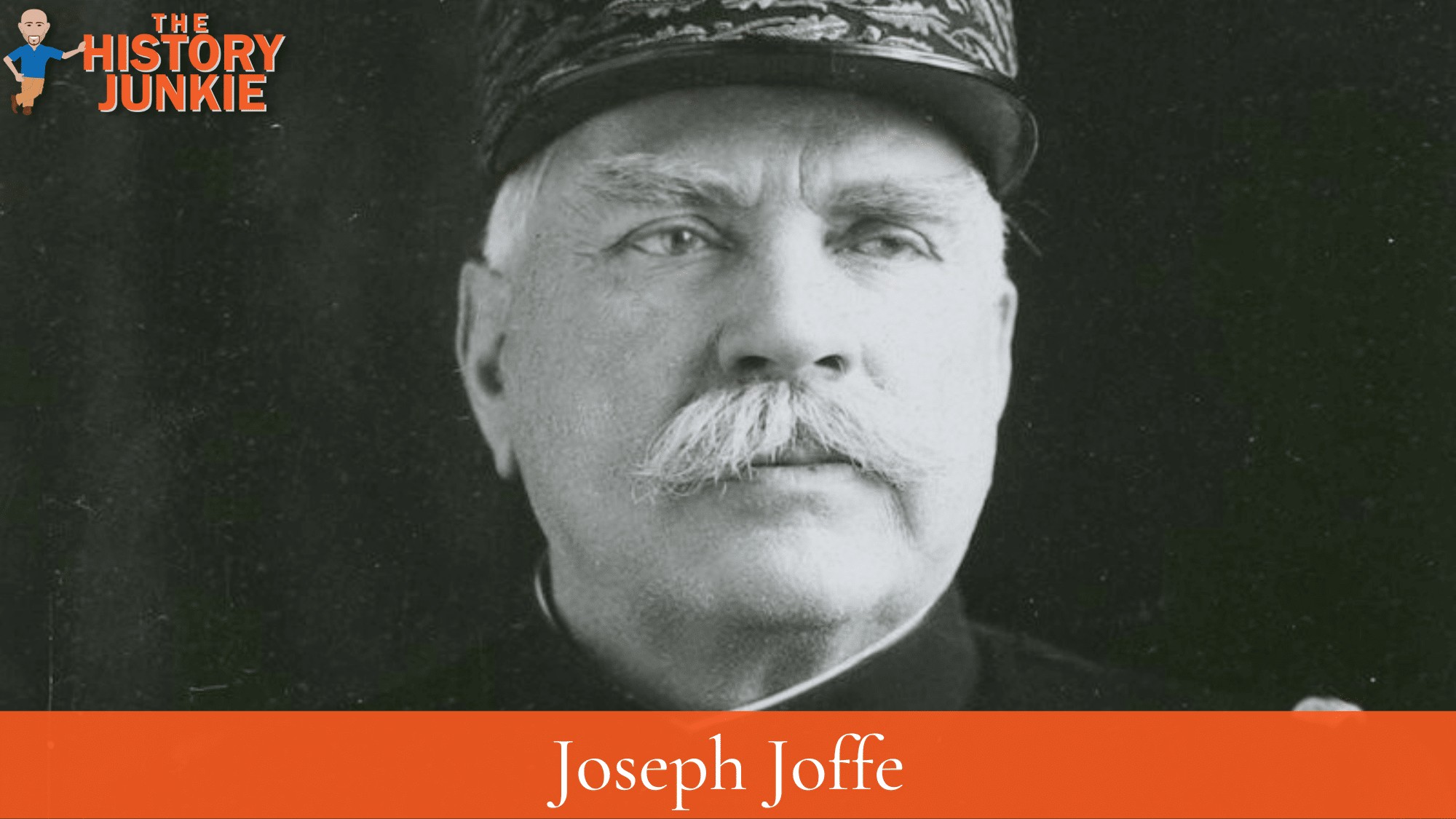
Jump to:
#1. The Battle Of The Frontiers Was Many Battles
The Battle of the Frontiers was before the First Battle of the Marne and was the beginning of the Schlieffen Plan.
The German Army launched a series of attacks that led to stunning victories against the French Army. This would be the initial attack that would ignite World War 1.
From Wikipedia:
These battles were fought along the eastern frontier of France and in southern Belgium shortly after the outbreak of the First World War.
The battles resolved the military strategies of the French Chief of Staff General Joseph Joffre with Plan XVII and an offensive interpretation of the German Aufmarsch II deployment plan by Helmuth von Moltke the Younger, the German concentration on the right (northern) flank to wheel through Belgium and attack the French in the rear.
The German advance was delayed by the movement of the French Fifth Army (General Charles Lanrezac) towards the northwest to intercept them, and the presence of the British Expeditionary Force (BEF) on the French left.
The Franco-British troops were driven back by the Germans, who were able to invade northern France. French and British rearguard actions delayed the Germans, allowing the French time to transfer forces from the eastern frontier to the west to defend Paris, culminating in the First Battle of the Marne.
#2. Belgium Was The Location Of The First Attack
What became known as the Battle of Haelen occurred on August 12, 1914.
As the Germans advanced, the Belgians attempted to blow an important bridge over the Gete River. The explosion took out much of it but left enough that 1,000 troops could cross.
The main Belgian defense line was west of Haelen in terrain that gave only an obstructed view to the attacker. The 17th and 3rd Cavalry brigades assisted theJäger in and south of Haelen, which enabled artillery to be brought to the fringe of the village but attacks into cornfields beyond were repulsed with many casualties, some cavalry becoming trapped by wire fences.
The Jäger were also repulsed despite support from the 2nd Guards Machine-gun Detachment and dismounted cavalry sharpshooters.
The Germans were pushed back, and it was technically a Belgian victory, but had a minimal strategic effect.
The Germans captured many regions that enabled their plan to move forward.
#3. The Battle Of Lorraine Allowed The Germans To Push Further

The German offensive wanted to overwhelm the French and take control of many areas.
The French launched their own offensive in Lorraine and Alsace, which would result in a German victory and a disaster for the French.
While their initial attack did not push the Germans back, it did not last long, as their attacks were repeatedly met with stiff resistance from the Germans. Any gains they made were lost within five days, along with heavy casualties.
As the Germans pressed forward, the Allied armies were forced to retreat all along the frontier throughout the month of August.
#4. The Battle Of The Ardennes Would Expose The French

The Battle of Ardennes was the final battle that would be known as the Battle of the Frontiers at the beginning of World War 1 and would result in a German victory.
The scale of the French defeat was notable, only becoming clear to Joseph Joffre after a period of time had elapsed.
Even then, he was inclined to blame the poor performance of his forces rather than attribute it to strategy and circumstances. It did not dissuade him from planning further offensive attacks in the near future.
The Germans were victorious due to their aggression and weak leadership from the French.
